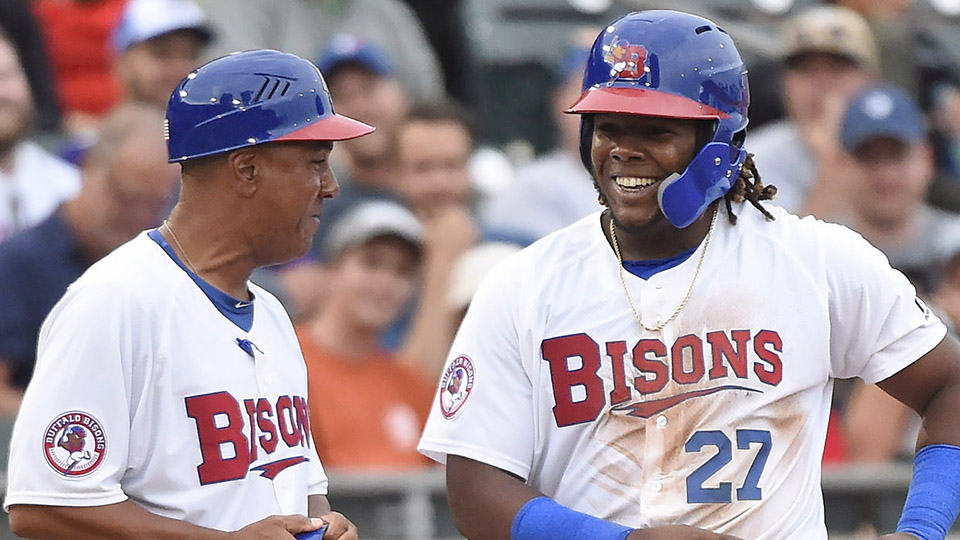If you’re a baseball fan like me that means you utilize social media as your main method of keeping track of the comings and goings of the baseball you care about. For many of us, the days of opening the morning paper and scrolling through the day’s box scores are a thing of the past. That’s not to knock those box scores, but in a time when there is baseball the world over worth following chances are any newspaper you open will be sorely lacking. That’s where the internet and social media come in handy.
For me, social media consists mainly of Twitter. I love baseball, but I have a life outside of baseball and away from the computer/phone. I intentionally limit myself to Twitter and that’s not a problem for me. It’s not a problem because virtually every professional league has some sort of presence on Twitter. As do the various reporters following those leagues. I can get all the box scores I want in addition to too many articles to ever actually read about every league in existence. I can also get all the highlight videos one could ever hope to watch. Except, that’s not true for every league or organization.
For unaffiliated leagues, the lack of highlight videos is just a fact of life. The smaller size of the leagues coupled with their limited resources means that some leagues provide highlights and others do not. However, there is one behemoth of the baseball industry that now makes it very hard to get excited for their brand of baseball. That behemoth used to provide highlight videos for every league and every team, lots of them. That all changed this year when Minor League Baseball announced they would be limiting the number of videos and highlights available on social media.
There was a decent amount of grumbling from fans at the time of the announcement. Baseball America stating they were being forced to remove all MiLB highlights from their site and would not be posting any in the future certainly made an impact in the way I consume baseball content. I can only assume it did for others as well. This season there is a decided lack of MiLB chatter on my Twitter feed as compared to years past. Gone are the numerous highlights provided by every team and every league of prospects doing prospect things. There have been the occasional videos, but compared to the amount of footage we had on prospects as recently as the 2018 season it’s like a desert out there.
In their announcement about limiting video and highlight content starting with the 2019 season, MiLB was very clear as to their reasoning. It’s their content and unless they can directly profit off of a highlight being shared they won’t be sharing it. They never outright said this, but anyone who can speak business knew exactly what they were saying in their announcement. MiLB is certainly within their rights as a business to try and make as much money as they can off of their content. However, I’m pretty sure their ruling is having the opposite effect. The minor leagues need readily available and distributable highlights to reach beyond the local fans, team affiliation prospect watchers, or general prospect hawks. Sure, the highlights MiLB has allowed to enter the social media stratosphere this year have generated plenty of discussions. But, think of all the discussions and word of mouth sharing of highlight videos that MiLB has lost thanks to highlights never posted? I have no way of quantifying the lost chatter that has resulted from MiLB’s video-sharing policy, but I don’t think hard data is needed when all one needs to do is look to the decreased buzz surrounding prospects as compared to before.
The Socialist in me can’t help but think that this diminished buzz for prospects (keep in mind I’m not talking about buzz among prospect hawks, but rather a lack of buzz among non-prospect hawks) is exactly what Major League Baseball wanted when their MLB Advanced Media arm instituted this policy in conjunction with MiLB. Less buzz for prospects means fewer questions about service time manipulation and gives the owners more of a reason to continue to drive down minor league signing bonuses and salaries. Maybe this isn’t even close to a reason behind the policy, but I don’t trust the intentions of MLB owners for one second, so I remain open to this sad theory being a possibility.
What I do know for certain is that I used to be able to open my Twitter feed and see highlight after highlight from MiLB games. I got excited about prospects I knew of and became aware of prospects I’d never heard about before. Social media was doing what it was designed to do and allowing large chunks of people to care more about MiLB, and its leagues, players, and teams. Now I’m not as excited about MiLB and I don’t get the inkling to check out new prospects or reaffirm my opinions on older prospects. MiLB may have every right to limit video distribution but without the highlight packages, they are severely limiting their fanbase as well as any new interest in their leagues, teams, and players.
Lead photo courtesy of Nathan Denette – The Canadian Press




